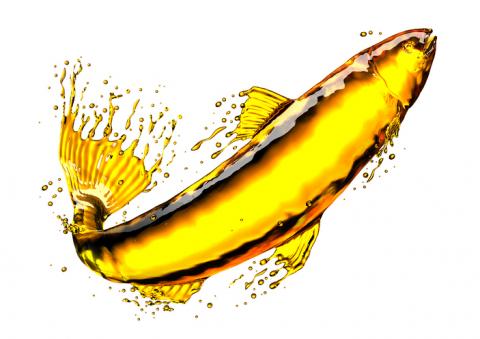
Omega 3 polyunsaturated fatty acids have such a good reputation for improving cardiovascular health that someone actually invented a prescription form of them. The official indication for Lovaza is the existence of high triglycerides, and the expected benefit is reduced risk of heart disease. The motivation was great, the solution is crazy. Let's explore a bit.
Fats, or fatty acids, fall into three major categories:
- Saturated fats, often solid at room temperature, such as lard, butter, and many (but not all) of the fats in red meat and butter.
- Mono-unsaturated fats, where just one of the chemical bonds in a long fatty acid is “unsaturated”, i.e., not full of hydrogen atoms attached on the side. These fats include many of the fats in olive oil, avocados, almonds and cashews. There are other sources but I cannot recommend canola, peanut, or safflower oil!
- Poly-unsaturated fats, where two or more of the chemical bonds in the long fatty acid is “unsaturated”, i.e., not full of hydrogen atoms attached on the side. There are certain poly-unsaturates that we MUST eat: we need them, but we can’t make them from other foods or fats. The two primary essential oils are the omega-6 oil, linoleic acid, and the omega-3 oil, alpha-linoleNic acid.
Let's look a little harder at these crucial poly-unsaturates:
- Linoleic acid is found in vegetable oils, prepared foods, in the meat of animals (especially grain-eating animals). I have never seen a patient with a normal amount of this acid: every single test I’ve done has shown a TOO HIGH amount of linoleic acid. This is not surprising, even in a healthy eater, as most of us historically or currently—have eaten too many of these foods.
- Alpha-linolenic acid come from walnuts and flaxseeds, pumpkin seeds and pumpkin seed oil, pecans and hazelnuts, and is important as a fuel for our bodies to make two more essential omega-3 fatty acids: EPA and DHA. OR you can shortcut and take EPA and DHA directly.
Getting to the Heart of the Matter
EPA and DHA come from fish, fish oils, “marine sources” (algae), and in some eggs.
ALA, EPA and DHA once comprised a proportionally larger part of our diets, primarily because we ate a lot less, a LOT less, omega-6 fatty acids than we do now. And it’s all about the ratio. I think of it (this is not quite true) as if Omega-6’s provide us a benefit that includes a cost; omega-3’s come in and first they clean up the “cost” of the omega-6’s and then, if there’s any left over, they can do their work which includes immune modulation, optimizing heart and blood vessel health, and making our brains perform at a top-notch level. Here are a couple more surprising benefits: omega 3's are good for breast health, bone health, dry skin problems, increasing exercise capacity (via blood flow) and even helping with weight loss (also probably the blood flow benefit.)
Way back in time, we ate about an equal amount of 6’s and 3’s… 6’s began taking up more space on our plates when we started eating grains. The very sad SAD (Standard American Diet) is estimated to have an unbelievably bad ratio of 30-50 omega 6’s to each single omega 3. No wonder we’re so sick. (Look for an upcoming article on Dr. Cate Shanahan’s book Deep Nutrition, second edition: her investigations lead her to believe that our over-consumption of omega 6’s are THE #1 cause for modern health problems.)
So you can see the importance of eating less omega-6’s and eating MORE omega-3’s. I would imagine that every medical practitioner, conventional, integrative, functional, whatever—agrees that we should eat more omega 3’s and should strongly consider supplementing them.
Conventional doctors don’t understand/value supplements, of course, so Big Pharma invented a prescription form of omega 3’s called Lovaza. The craziest thing I’ve ever heard of: an inadequate dose (840 mg. per capsule, about half a usual dose), a poor ratio (EPA about equal to DHA, it should be about twice the DHA) and… if you don’t have insurance it could cost you… over $200 a month!! But hey, it’s easy for a doctor to write it as a prescription.
My favorite omega 3’s
Where are you going to find these omega 3's, how should you take them? I suggest:
- Fatty, cold-water fish such as salmon, halibut, mackerel, herring, sardines: eat 1-2 servings a week.
- Some folks don't like fish. Many capsule options exist: if they are ever exposed to heat, they can be rancid and more harm than good. I recommend Metametrix (from a practitioner, and in my office and my online store) or Nordic Naturals or Carlson (often seen in health food stores.) To minimize fish-burps, take your capsules at the beginning of a meal.
- My fave, though, hands down, because I never forget to take it, is Barleans Ultra-High Potency Omega Swirl Fish Oil, Key Lime flavor and it really does taste like key lime pie. It’s made with sorbitol, and I have had one patients whose sensitive belly didn’t like it, but at my office we can’t keep it on the shelf! It is also in both my office and my online store.
Ultimately, for your health, the best omega 3 you can take is FIRST, a reduced amount of omega 6’s and SECOND, the omega 3 you will take. Better to buy one you “like” (taste, ease and quality) and then take it as often as you can afford it.
Only question for me is whether to have my key lime fish oil before dinner as an appetizer or after dinner as dessert.
